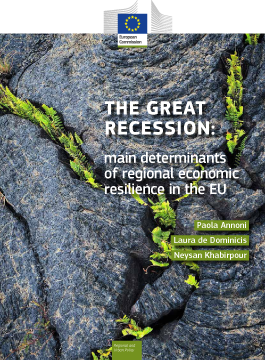
The aim of this study is to empirically analyse the determinants of regional economic growth and resilience across European Union (EU) regions.
We will try to answer the following questions: Do regions vary in their ability to recover and bounce backfrom economic shocks? What internal and external factors are associated with the capacity of EU regionsto cope with economic adversity and maintain economic well-being while others fall short? Are the determinants of economic growth and resilience the same across different groups of EU regions?
In order to answer the questions above, we have estimated a conditional growth model whereby economic growth across EU regions depends on a set of initial factors (i.e. human capital and investments) and proximity to other regions. In addition to the more traditional factors, this study also employs a subset of components of the Regional Competitiveness Index (2010) – RCI – to explain growth differentials across EU regions. Finally, we have grouped EU regions into two groups, according to their level of economic development – a north-west core of relatively high-income regions, and a south-east periphery of lower-income regions – and have tested whether our set of explanatory variables has a similar impact on the economic growth of the two groups of regions.
The econometric modelling approach incorporates complex spatial effects by considering both spatial heterogeneity and spatial dependence across geographical units, enabling us to account for spatial spillover among EU regions.
Empirical results indicate that while both groups of regions experience economic convergence, recent determinants of growth, as well as spillover effects, differ across the two. In the core regime, better institutions, higher shares of investment, and an economy specialising in higher-value-added sectors significantly spur domestic growth, with investment also inducing positive spillover effects to neighbouring regions. In the peripheral regime, low shares of lower-secondary educational attainment and high shares of tertiary educational attainment have a significant positive effect on domestic growth,with higher shares of tertiary educational attainment also inducing positive spillover effects. Moreover, technological readiness is also identified as an important factor in the peripheral regime creating positive spillover effects.
This is a critical time for the future of EU Cohesion Policy with the regulations for the post-2020 regional policy period currently under discussion. Several findings in this study are particularly relevant to this debate and should be factored into the ongoing discussions.
